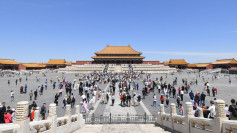Artificial intelligence technology can benefit many. This is why instead of racing against each other to develop AI, the two countries that have leverage on this aspect should work together. According to the analysts, by working together instead of against one another, the United States and China can achieve so much more in the world of artificial intelligence technology. The two nations can even benefit from each other.
With worldwide demand for artificial intelligence technology poised to grow by leaps and bounds in the coming year, it is not surprising to see the two economic giants the United States and China leading the pack in developing the technology for the inevitable AI revolution.
According to the PWC, AI can increase global GDP by US$15.7 trillion by 2030. The country that prepares and strives to lead the revolution and meet the demand for AI technology will naturally strike gold. However, even if China and America each have a good chance of leading the revolution, going at it alone might lack either one of them into mediocrity, an analyst claimed.
MIT President L. Rafael Rif wrote in a New York Times Op-Ed that if both countries are too focused on competing against each other in developing Ai technologies, they both have equal risks of being mediocre. Instead, they should be leveraging on each other's strengths and helping each other accomplish more through cooperation instead of competition.
China has several strengths that cannot be overlooked by the United States, South China Morning Post wrote. First, it has a clearly defined national strategy from the highest governmental level. Therefore, its AI development strategy is nationally supported by high investment capital. The CB Insights Report claimed that global AI investment flowed into Chinese startups back in 2017, 38% higher than what US firms received. China also have full access to massive amounts of consumer data, which is necessary for the age of AI. Both national and local governments in China are all supportive of AI infrastructure development geared towards real-world implementation.
The United States, on the other hand, has access to hardware necessary for running advanced AI algorithm. The United States is taking advantage of this by blocking Chinese attempts to acquire US chip companies, ensuring that Chinese developers will only look to the US to get the hardware for their own AI applications. The United States is also the home to the top AI research and educational institutions, such as MIT and Stanford, among others.
What the United States has that China does not is diversity in its AI talent pool as well as general population. Having access to diverse AI talent around the world gives the US an advantage in developing comprehensive and robust AI algorithms
If the two work together, however, so much more can be achieved. The United States can benefit from the massive volume of Chinese data while China can benefit from the diversity and hardware of the United States. AI-friendly infrastructure in China can be maximized if it works with the United States and the same goes for the diverse talent pool of the United States.






